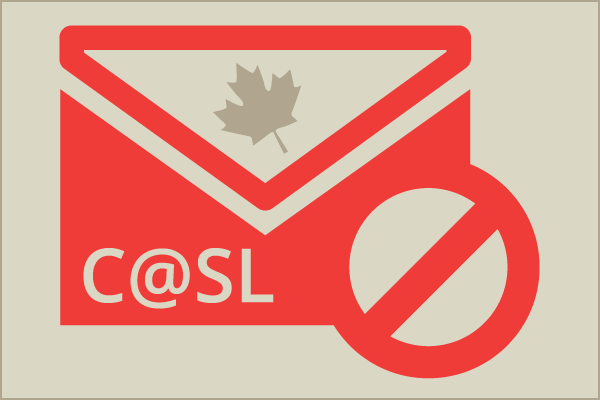Are you ready and fully compliant for Canada’s Anti-Spam Legislation?
CASL was born in a bid to join the rest of the G8 in helping legislate how businesses and entities send commercial electronic messages (CEMs) throughout Canada. CASL covers all electronic communications between brands and receivers save for fax. But what does the new law mean for your inbound marketing efforts here in Toronto or throughout the country?
Good: Transparency & Global Initiative
Trust lies at the core of any relationship between brand and consumer, and spam is a huge detriment to trust. Spam can lead to the downfall of an inbound marketing strategy. And this means CASL is, at its core, good for business.
On your part as a business sending CEM, all your communications need to be completely transparent. Clearly state the sender’s (your or your business) name, address, and link to a good website. Opting in is now a clear-cut process, but more on that later. Remember: transparency is key.
Be exceptionally honest in everything in your email marketing campaigns. When asking for permission from people to send them CEM, you need to allow them to explicitly state their permission. For instance, if you’re asking via radial button, that button needs to be toggled “off” by default, so they can explicitly turn it “on,” and so on.
Bad: A Lot of Adjusting for SMBs
CASL requires – no, it doesn’t just recommend, it requires – centralization of list management, CEM sending, and overall campaign handling.
SMBs understandably have fewer resources to invest in list management software or tools, much less lead generation and customer relationship management solutions. Regardless it’s still a bright idea to centralize list management, and CASL agrees, if its enforcing it is any indication. So if you’re keeping buying lists in separate places like different hard drives and files, you should collate them all into one place and operate from there.
Lessen the burden of centralization by using such services like HubSpot, Constant Contact and MailChimp. They offer affordable and even free (of course, limited) options, but the advantages outweigh the costs, especially post-CASL; to mention a few:
- Great, automated list management
- Accurate, well-defined metrics for campaigns
- Numerous templates for CEM
Ugly: “Consent” Gets Complicated
Not exactly ugly, but complicated: let’s discuss the intricacies of “consent,” mentioned earlier. CASL is so well-defined that it manages to break down consent into two:
- Express consent – actual opt-ins: these are the people who gave explicit consent and permission for you to reach out to them.
- Implied consent – where direct consent isn’t given, but receiver published addresses in a prominent manner or sent such information via correspondence to the sender (but didn’t agree to any CEM).
Why the delineation? To ensure the continuation of current business relationships that did not necessarily have express consent. However, there is a time limitation. Under the new CASL regulations, businesses have 3 years to gain express consent from their current customer listings. After the three year grace, businesses are required to gain express consent for continued CEM correspondence.
How important is it to follow abide by CASL’s rules? Well, aside from its intrinsic value in helping build trust for your brand, there’s also a maximum penalty of $1,000,000 and $10,000,000 for any individual or organization (respectively) found to have gone against CASL’s provisions. Liability extends to vicarious and director / officer. That looks pretty serious, doesn’t it?
At the very least, with the way inbound marketing CEM is increasingly becoming part of the norm for modern folks, businesses can finally rally behind a well-defined and properly policed set of regulations for it.
